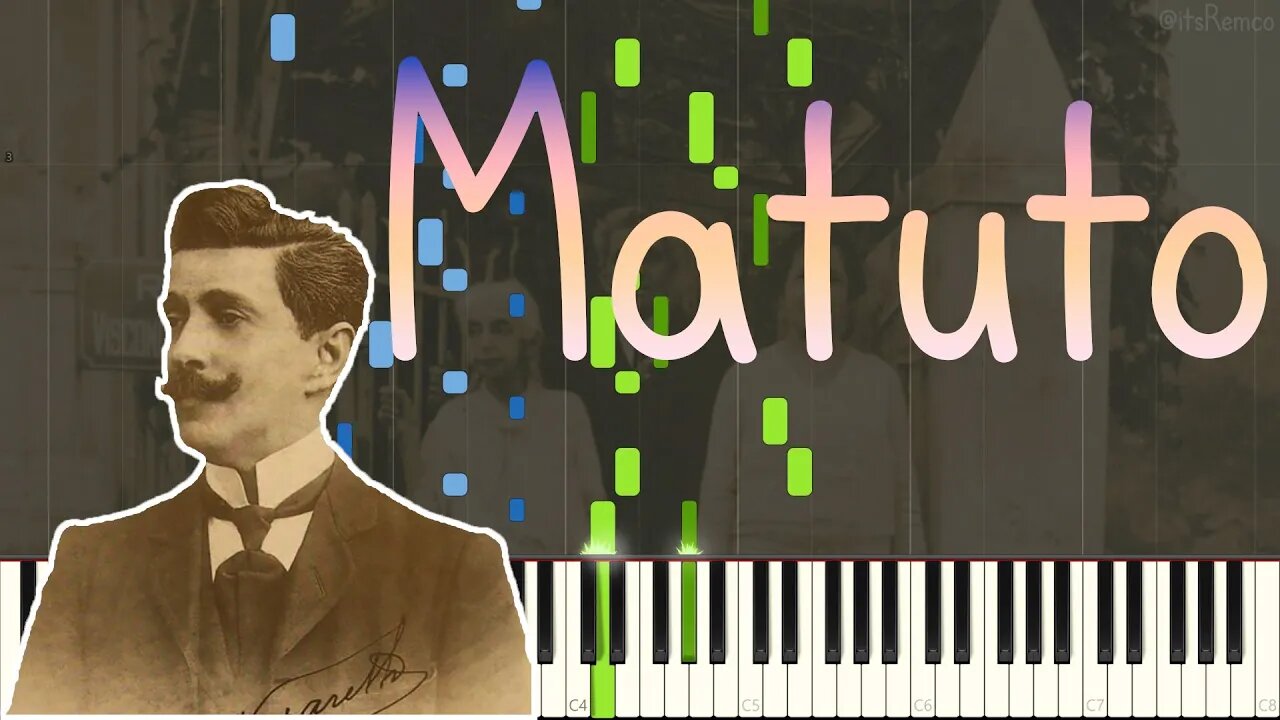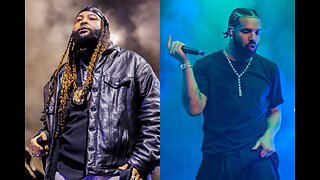Premium Only Content

Ernesto Nazareth - Matuto 1917 (Brazilian Tango/Choro Piano Synthesia)
Brejeiro by Ernesto Nazareth
Transcribed by @rdsteyer Check out his Choro Piano transcriptions!
https://www.youtube.com/user/rdsteyer
Wikipedia on Ernesto:
Ernesto Júlio de Nazareth (March 20, 1863 – February 1, 1934) was a Brazilian composer and pianist, especially noted for his creative Maxixe and Choro compositions. Influenced by a diverse set of rhythms like the polka, the habanera, and the lundu, he combined this elements with his classical formation to create compositions that he called “Brazilian tangos". These would be the precursors for what is known today as Choro. His piano repertoire is now part of the teaching programs of both classical and popular styles, as Nazareth once served at the boundary between these two worlds.
Ernesto Nazareth was born in Rio de Janeiro, one of five children. His mother, Carolina da Cunha gave him his first piano lessons. At the age of ten, after his mother's death, he continued his piano studies with Eduardo Madeira and Charles Lucien Lambert. Strongly influenced by Chopin, Nazareth published his first composition Você Bem Sabe (which means "You know it well") in 1877, at age 14. At that time, he had begun his professional career playing in cafes, balls, society parties and in the waiting rooms of movie theaters. In 1893, Casa Vieira Machado published his famous tango Brejeiro.
Wikipedia on Brazilian Choro music:
Choro, also popularly called chorinho ("little cry" or "little lament"), is an instrumental Brazilian popular music genre which originated in 19th century Rio de Janeiro. Despite its name, the music often has a fast and happy rhythm. It is characterized by virtuosity, improvisation and subtle modulations, and is full of syncopation and counterpoint. Choro is considered the first characteristically Brazilian genre of urban popular music. The serenaders who play choros are known as chorões.
Originally choro was played by a trio of flute, guitar and cavaquinho (a small chordophone with four strings). Other instruments commonly played in choro are the mandolin, clarinet, saxophone, trumpet and trombone. These melody instruments are backed by a rhythm section composed of 6-string guitar, 7-string guitar (playing bass lines) and light percussion, such as a pandeiro. The cavaquinho appears sometimes as a melody instrument, other times as part of the rhythm.
------------------------------------------------------------------------------------------------------------------------
►Follow me on Instagram 📸: http://instagram.com/its.Remco
►Follow me on Reddit 🤖: http://reddit.com/user/its_remco
►Add me on Discord 💻: itsRemco # 0827
------------------------------------------------------------------------------------------------------------------------
My free practice recommendations I use myself:
►Perfect Ear app to train your hearing (Android & IOS) 👂🏽: http://gestyy.com/w65gXL
►Complete Music Reading Trainer (Only Android) 👀: http://gestyy.com/w65jdn
►Hanon exercises to improve the piano fingerwork 🖐🏽: http://gestyy.com/w64QhM
------------------------------------------------------------------------------------------------------------------------
Things I recommend that I paid for to practice Jazz Piano:
►My current digital piano is the Roland RP501r 🎹: https://amzn.to/2QB4SvG
►iReal Pro app to practice with backing tracks 📲: https://amzn.to/2MS0Ca3
------------------------------------------------------------------------------------------------------------------------
#ernestonazareth #matuto #choro #braziliantango #maxixe #chorosynthesia #braziliantangosynthesia #maxixesynthesia #synthesia #chorotutorial #braziliantangotutorial #maxixetutorial #brazilianragtime #latinragtime #brazilianpiano
-
 56:02
56:02
Sarah Westall
6 hours agoBiohacking & Peptides: Weight loss, Anti-Aging & Performance – Myth vs Reality w/ Dr. Diane Kazer
33.2K14 -
 11:22
11:22
Bearing
16 hours ago"Anxious & Confused" Federal Workers FREAK OUT Over DOGE Efficiency Email 💥
38.5K56 -
 1:31:20
1:31:20
Flyover Conservatives
1 day agoUS STOCK MARKET: Sinking Ship - Dr. Kirk Elliott; How I Fought Back Against Woke Schools & Stopped Gender Bathrooms - Stacy Washington | FOC Show
51.3K1 -
 1:08:09
1:08:09
Donald Trump Jr.
11 hours agoFBI Dream Team, Plus Taking Your Questions Live! | Triggered Ep.219
189K252 -
 7:32:37
7:32:37
Akademiks
10 hours agoDrake and PartyNextDoor '$$$4U' Album Sells 250K first week. BIG AK IS BACK.
110K11 -
 3:12:08
3:12:08
MyronGainesX
9 hours ago $30.72 earnedDan Bongino Named As Deputy Director Of FBI And CPAC Recap
89.9K27 -
 3:12:31
3:12:31
vivafrei
9 hours agoBarnes Live from Seattle - Defending Benshoof in a Case that is CRAY CRAY!
130K45 -
 2:12:12
2:12:12
Robert Gouveia
9 hours agoLiberals EXPLODE over Elon's Email; Lawsuits FLY; Sanctions?? Congrats Dan!
103K35 -
 1:33:36
1:33:36
Redacted News
10 hours agoBREAKING! PUTIN LAUNCHES MASSIVE OFFENSIVE IN UKRAINE AS EUROPEAN LEADERS PUSH FOR MORE WAR
181K242 -
 44:39
44:39
Kimberly Guilfoyle
10 hours agoBetter Days Ahead for the FBI, Live with Asm Bill Essayli & John Koufos | Ep.199
115K24